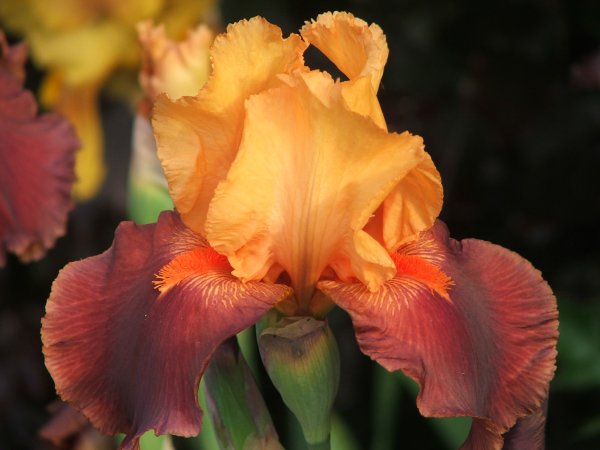 Despite the fact this is mid summer the nursery at Iris of Sissinghurst is beginning to prepare for next year. Plans are being finalised to divide bearded iris based on the growth of each variety.The only constant throughout the summer is the work that has to be undertaken to control the infiltration of weeds.At Iris of Sissinghurst chemicals are NOT used for this work because of the risk of damage to plants and therefore a large part of the process is undetaken by hand.
Despite the fact this is mid summer the nursery at Iris of Sissinghurst is beginning to prepare for next year. Plans are being finalised to divide bearded iris based on the growth of each variety.The only constant throughout the summer is the work that has to be undertaken to control the infiltration of weeds.At Iris of Sissinghurst chemicals are NOT used for this work because of the risk of damage to plants and therefore a large part of the process is undetaken by hand.
As iris lovers will know bearded iris do not require rich soils and therefore manuring is discouraged (if you manure beds either in advance of planting iris or in existing beds you are likely to experience excessive leaf growth but no flowers the following year). However light feeding with a potash based fertiliser is acceptable AFTER bearded iris have flowered. This is particularly important for remontant/reblooming iris which will reflower in early autumn.If anyone is interested in remontant varieties we have identified these on the website. Do not hesitate but to contact the nursery if you are interested in or have questions about remontant iris.
The July edition of the Saga magazine included a tall bearded iris TORERO (see photograph above) as its plant on the month. This is a French bred iris with apricot standards underpinned by strawberry red falls decorated with orange beards. It reaches 90cms (3feet) but does like an open sunny aspect.The magazine was kind enough to identify Iris of Sissinghurst as the preferred grower. This generated a lot of interest from across the United Kingdom. It is a spectacular iris which stand out in any garden.
The month of August has been more temperate than early summer with reduced day time temperatures and even the occasional periods of rain. The ground here is still incredible dry with cracking of the clay soil still apparent. The long range weather forecast suggests September will experience more seasonal rainfall which will be much appreciated in this part of Kent.

